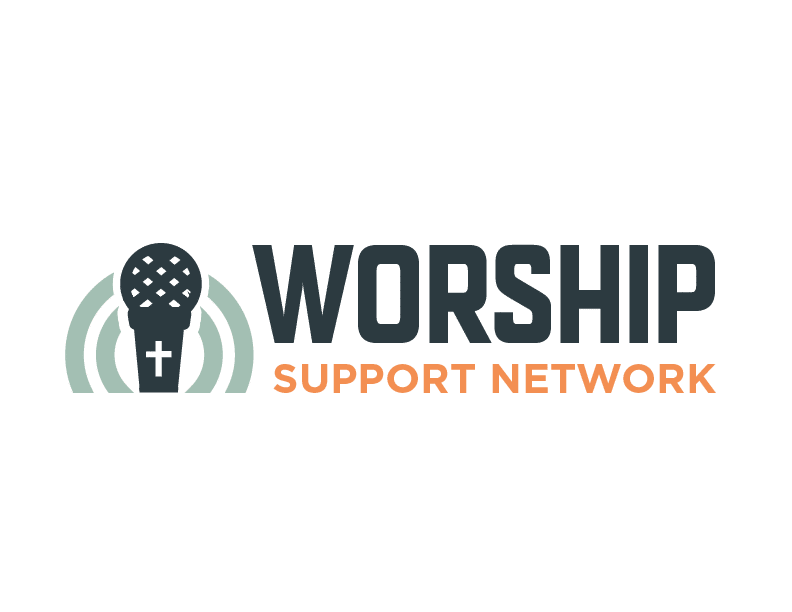
NOTE: This blog is part of a series called “Pursuing Excellence.” If you haven’t done so already, go back and read Part 3- “Pocket, Parts, and Holy Groove” In our last blog we talked about why playing whatever the heck you want was a BAD approach to giving our best for Sunday morning worship. Instead, we talked about the importance of fitting “into the pocket” and working as a team.
Now that’s all fine and dandy as a concept, and maybe you’re convinced! But let’s bring it to the practical: how do you know where your pocket is?
More importantly…how do you HEAR where your pocket is?
A lot of church worship teams believe the best way is learning each song exactly like the record- which is TOTALLY understandable. Well-recorded, theologically rich, quality worship music removes distractions and is an avenue to leading your church into worshipping God. Who wouldn’t want that for Sunday morning? The problem is…some of our favorite worship songs have over 100-150 tracks recorded.
Oh yes, you heard me correctly!
The acoustic guitar you hear in “Reckless Love”? It’s actually 4 guitars: 2 guitars playing one capo position, doubled-tracked, panned hard left and right to sound wide and open, and another 2 playing a completely DIFFERENT capo position, doubled, panned hard left and right. The bass in a Phil Wickham song? It’s usually two guitars: one regular bass and one synth bass, sometimes even a third sub-bass. Have you ever listened to a Hillsong Young & Free song? Don’t even get me started on the number of synth tracks!!
Now this approach is awesome for recorded music. It sounds lush, full, exciting, and complex. And if you use tracks on a Sunday morning, you can let those tracks fill-in the gap if you’re missing a band member or if you really like the sound of it in your mix (and you don’t think you could recreate it otherwise). But what do you do if you’re a team that doesn’t use tracks?
You strip it back to basics.
It’s time for us to learn the fundamental role that our instruments play. Before we try to emulate it, there are certain patterns we can easily learn that will set us on a trajectory of quickly identifying our pocket and staying there Sunday morning!
Below is a quick-start guide to most of the instruments found on a typical morning. You might be surprised to see what it says next to your instrument:
Drums
Say it with me: l e s s i s m o r e. The role of the drummer is to define the way the congregation will feel the beat. Your main concerns are keeping tempo on the kick and snare. Everything else is a bonus! Give a great drummer a kick, snare, and hat, and he’ll sound 100 times better than a busy drummer with a 30-piece kit.
You will be tempted with that fill you’ve been working on at home but can’t quite nail…I promise you: it’s not worth it. Every extra cymbal hit and swipe, every out-of-time tom exploration…it muddies the mix and has the potential to derail your set. Tempo, kick plus snare….then add in as needed. Holding back and making smart, powerful decisions will lead you, and your team, into deeper worship.
Bass
Your job is to be in line with the drummer. He’s your best friend! When the bass and kick hits line up with each other, both of them become insanely effective together. The bond between the bassist and drummer usually takes a long time to develop, but the more you focus on the kick and root notes, the better you’ll serve your team. When in doubt: keep it simple! Your root note defines the chord at the end of the day!
Acoustic Guitar
Bandleader and producer Jack Stratton likes to say that “(rhythm) guitar is a tambourine with a ton of different pitches…a very strange-looking tambourine.” When it comes to the worship setting, I had a mentor tell me that acoustic guitar is just a glorified shaker. Now, before I get angry emails from worship leaders, of course we’re kidding! Sort of. The fact remains: the main function of acoustic guitar in a worship setting is percussive. Acoustic guitar accentuates certain subdivisions and adds energy in a way a normal percussion instrument can’t.
Of course, if a song is fingerpicking or arpeggio heavy, pay attention to those moments. But maintaining great rhythm will take you and the band to the next level!
Electric Guitar
Depending on whether you’re the rhythm electric or lead electric, you will most likely be the one having the fun – playing those recognizable hooks and lead lines, executing countermelodies, using your instrument to create ambiance, etc. But warning: don’t shred just because you can! You need to be careful that you’re not occupying the same space as the voices!
Keys
Keys also have tons of fun playing leads, filling pockets of space with pads or atmosphere, providing the glue needed to take worship to the next level. But be careful…with 88 keys, you’ll be tempted to use all of them. If you’ve got a bass player covering the low notes, STAY AWAY! Overcome the temptation to overplay and you’ll be overjoyed!
Strings
Unless you have written music, your job will be to listen well. Doubling a lead line can lead to pitch and phase issues unless you’re very careful with your intonation, so getting creative with parts when there are none is crucial. Violins and cellos can be EXTREMELY powerful in worship, so let your instrument soar and remember…brevity.
Brass and Woodwinds
Stabs, solis, and written music is your best friend. Go in with a plan! With all that volume in your face on Sunday, it’ll be hard to listen in quiet moments. But if you’re needing to bring the house down…you know what to do!
Percussion
If you’re a percussion player and your team has the capacity you AND a drummer…then you are a gift to the team! You can create moments with cymbal swells, hold it down on tambourine, and even have some fun on bongos or congas. However, this approach only works if you’re completely locked-in with the drummer. You need to be a laser-focused metronome. Percussion can quickly turn to distract with an extra rain stick, triangle, and vibraslap in the wrong moments.
Vocals
There are so many philosophies on the role of the singer (depending on your worship style). We’ll revisit this in-depth later down the road.
Notice a common theme with all the instruments? When you’re working as a team, even one instrument overplaying can quickly take a turn for the worse. But when everyone lays in the pocket and commits to unity, the team thrives.
We’ve been doing some un-learning…and some re-learning. Now that we have a 30,000 foot approach to our roles on Sunday, how do we use that to learn our specific parts? For that, you’ll have to tune into Part 5: “5 Tips For Learning A New Song”.



